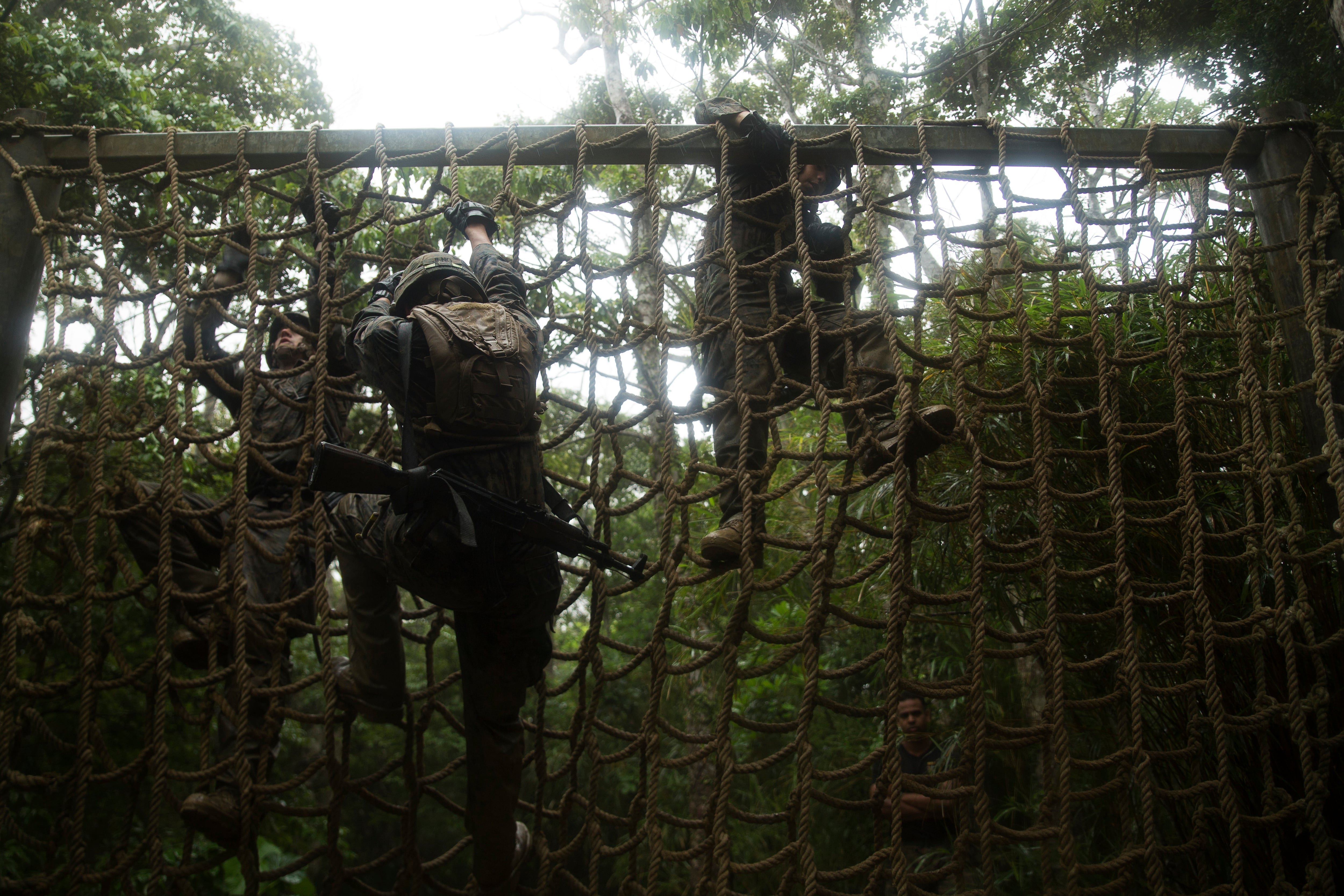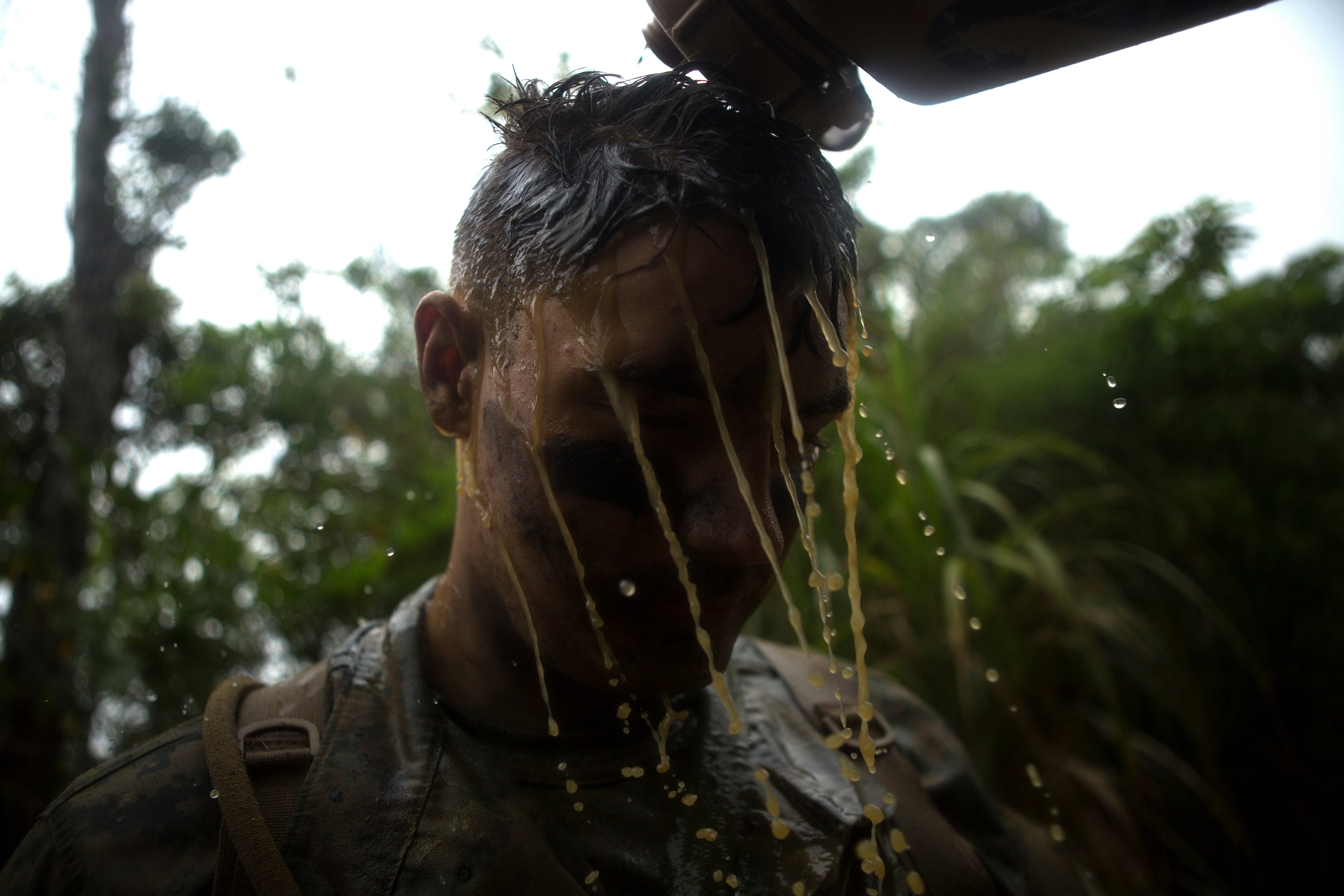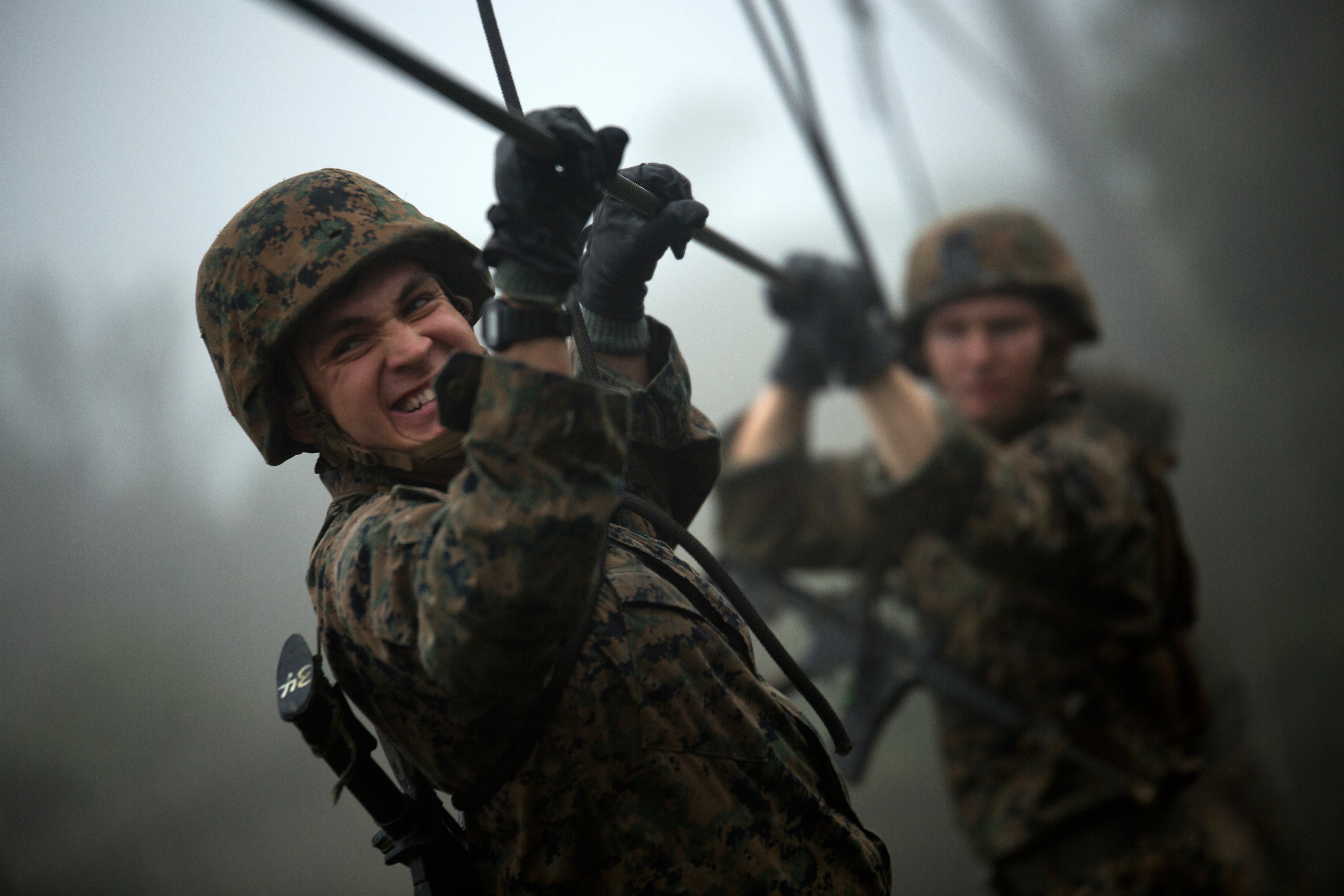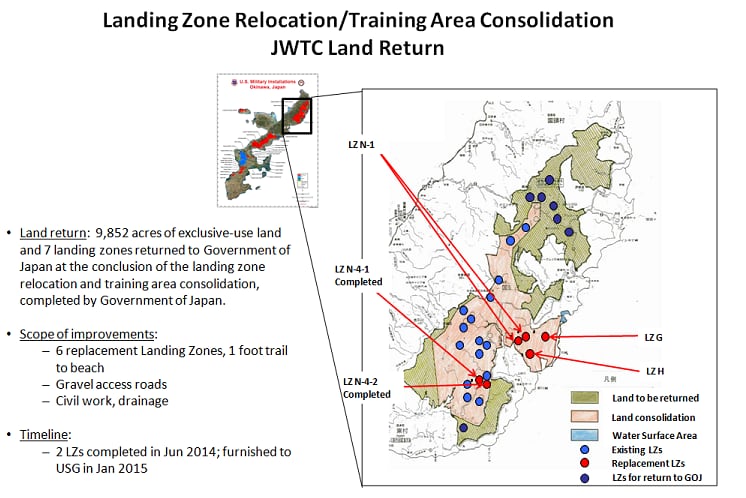After years of fighting in deserts, more Marines are sharpening their jungle warfare skills — and the training is intensifying.
As more Marines are tapped for missions in tropical locales like the Philippines, Honduras and Australia, the Corps has boosted the number of leathernecks that move through jungle training.
Over the last two years, more than 5,000 Marines have attended the Corps' Jungle Warfare Training Center in Okinawa, Japan, annually — an increase of about 30 percent, said 1st Lt. Martin Harris, a spokesman for III Marine Expeditionary Force.
When Maj. Gen. Richard Simcock became the commanding general of the Japan-based 3rd Marine Division in 2015, he said he wanted to see his Marines get better at jungle fighting. Now more Marines rotating through Japan as part of the Unit Deployment Program are being sent through the training center where they face longer courses that test their fighting skills in rigorous terrain as humidity levels soar under double-canopy jungles.
Preparing Marines to operate in those conditions falls in line with the service's pivot to the Asia-Pacific region. With partner nations growing worried over China's rise and controversial island-building spree in the South China Sea, the Marine Corps plans to base about 15 percent of its force in Hawaii and beyond over the next few years.
Marines are also deploying in greater numbers to Central America, where violent drug cartels and gangs have forced tens of thousands of unaccompanied child migrants to flee for the U.S. border. The Marines train alongside local troops there year-round in mountainous tropical jungles.
After more than a decade in Iraq and Afghanistan, Marines need to be better prepared for operating in those types of environments, said Col. Michael Kuhn, assistant commander for the 3rd Marine Division, which operates the Jungle Warfare Training Center.
"We have to be able to fight regardless of what our [military occupational specialty] is — non-infantry, infantry units — we are all going to have to be able to fight in the jungle environment," Kuhn told Marine Corps Times.

Marines climb up and over a cargo net obstacle as they run through through the endurance course April 19, 2015, at the Jungle Warfare Training Center, Okinawa, Japan.
Photo Credit: Sgt. Matthew Callahan, III Marine Expeditionary Force /
Here's what Marines can expect when they head to the Jungle Warfare Training Center.
Revamped courses
The Jungle Warfare Center offers three courses: a five-day basic course, a 12-day infantry jungle skills course and a 14-day jungle tracking course. Those courses were recently lengthened from three, five and eight days respectively to give Marines more time to apply the skills they learn, Kuhn said.
The Marine Corps also took a look at each curriculum and made adjustments, he said, which added some tough new training scenarios.
"We tailored it better to the tasks that our Marines are going to have to execute in combat in the jungle environment," Kuhn said. "We have done more at night up there because we know we're going to have to be able to fight in low light and night conditions."
The basic course is for non-infantry units, Kuhn said. Marines learn about jungle characteristics and practice patrolling, repelling and land navigation.
The 12-day course teaches infantry units how to fight in the jungle, he said. The training is geared toward teaching infantry companies to conduct reconnaissance patrols and culminates with a four-day patrolling exercise.

A Marine bows his head and receives a "jungle baptism," from an instructor April 19, 2015, at the Jungle Warfare Training Center, Okinawa, Japan. The baptism, a term coined by JWTC staff, is a safety measure put in place that washes away mucky swamp water from Marines' faces after they complete the "Pit and Pond" obstacle on the endurance course.
Photo Credit: Sgt. Matthew Callahan, III Marine Expeditionary Force /
Both infantry and non-infantry Marines must complete a 3.8-mile endurance course. That requires them to overcome dozens of obstacles, including the "pit and pond" in which Marines must low crawl through muddy water and wiggle beneath loose Plexiglas, which simulates an explosive booby trap.
If a Marine touches that Plexiglas, all Marines within a five-meter radius are "killed" and have to go through the obstacle again.
The 14-day jungle tracking course teaches small-unit leaders how to locate the enemy in the jungle and include several tests tracking personnel over various distances. Marines also learn the dynamics of a footprint and anti-tracking and deception techniques.
"The majority of the operations that the Marine Corps has done in our history have all been in the jungle or tropics," Kuhn said. "As the Middle East has kind of slowed down from a heavy presence of ground forces and we refocus a little bit over to operations in the Pacific, it's very important that we get better at being able to fight in the jungle."
Tough terrain
Most of the roughly 5,000 Marines who will train at the center this fiscal year are assigned to forward-deployed units from Camp Pendleton, California; Camp Lejeune, North Carolina; and Marine Corps Base Hawaii, Kuhn said.

Lance Cpl. Carlos Ortiz crosses a gorge on a single-rope bridge during the endurance course April 19, 2015 at the Jungle Warfare Training Center, Okinawa, Japan.
Photo Credit: Sgt. Matthew Callahan, III Marine Expeditionary Force /
For those accustomed to operating in Iraq and Afghanistan, getting used to the jungle can be a challenge. But Kuhn said Marines always thrive in rough environments.
"Marines attack it and they see it as a challenge," he said. "At the end of every one of these courses, when you see them finish, it's extremely demanding training and their morale is extremely high."
The Jungle Warfare Center is located on the 20,000-acre Northern Training Area in Okinawa. The center has administrative control for the entire training area as a whole, which is used by all of the services.
The U.S. government is giving back 10,000 acres, or half of the training area, to Japan, but the Jungle Warfare Training Center itself is not getting smaller, Harris said. The number of Marines passing through the center will not be affected by the move, he said.

The Jungle Warfare Center is located on Okinawa's Northern Training Area, which is shrinking by about half.
Photo Credit: III Marine Expeditionary Force.
"The Jungle Warfare Training Center uses, essentially, most of what is going to continue to be operated by the U.S. military," Harris said.
There is no specific time line for returning the land to Japan, he said. The Japanese government is in the process of making infrastructure improvements that will allow the U.S. military to consolidate the training area.
Natural dangers
In 2015, a portion of the Jungle Warfare Training Center was closed after about 90 Marines were sickened with a bacterial disease called leptospirosis. Animals infected with the bacteria were believed to have urinated in one of the waterways that Marines were slogging through.
Now all Marines training there are required to take the antibiotic doxycycline, and they're taught to avoid areas with stagnant water, Kuhn said.

Cpl. Christian Hiraldo, right, leads his Marines and sailors through a mud pit during the jungle endurance course June 20, 2014 at the Jungle Warfare Training Center.
Photo Credit: Lance Cpl. Diamond Peden.
Leptospirosis is not a common ailment for Marines passing through the Jungle Warfare Training Center, though, he said. Most of the injuries Marines get during the jungle training are caused by heat, musculoskeletal strains, friction and cuts.
The jungle warfare trainers help to mitigate health concerns through proper training, Kuhn said. The Corps is also testing new uniforms and boots to keep Marines dry and clean.
Beyond the island
Marines can expect their jungle training to expand beyond Okinawa, too, Kuhn said. In the past, there was a perception that Marines stationed there "sat on the rock," but now they participate in an aggressive training schedule, holding exercises across the Pacific.
Marines should be eager to head to the Pacific, Kuhn said, as training opportunities now expand to places like South Korea, the Philippines, Thailand and Australia. And Marines who've completed courses at the training center tend to shine in Pacific exercises.
"You definitely see the growth in them based on what we're training," Kuhn said. "When we observe our Marines elsewhere in other mission rehearsals and training exercises across the Pacific, you can see the increased proficiency across the year."




